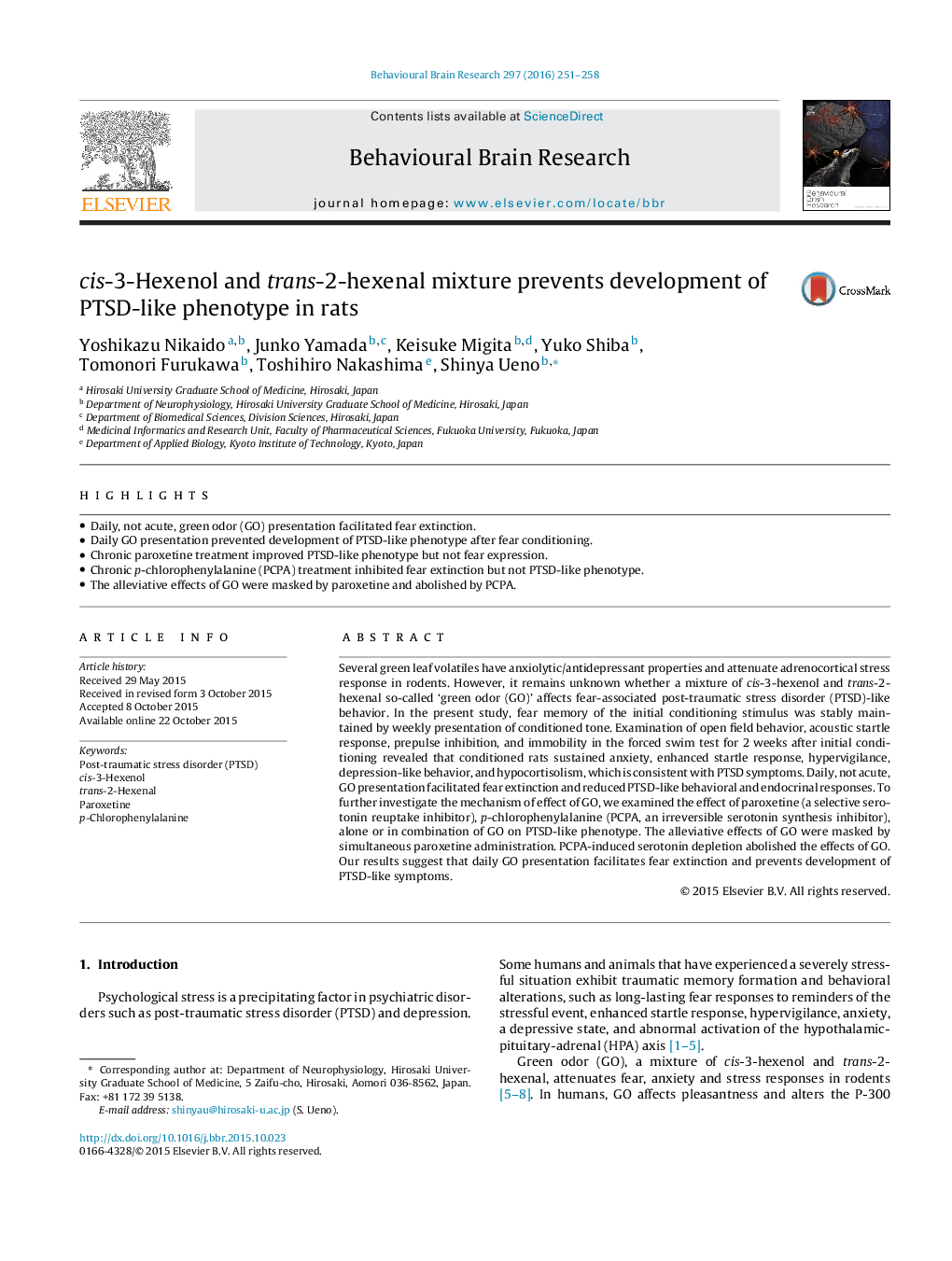| Article ID | Journal | Published Year | Pages | File Type |
|---|---|---|---|---|
| 6256407 | Behavioural Brain Research | 2016 | 8 Pages |
â¢Daily, not acute, green odor (GO) presentation facilitated fear extinction.â¢Daily GO presentation prevented development of PTSD-like phenotype after fear conditioning.â¢Chronic paroxetine treatment improved PTSD-like phenotype but not fear expression.â¢Chronic p-chlorophenylalanine (PCPA) treatment inhibited fear extinction but not PTSD-like phenotype.â¢The alleviative effects of GO were masked by paroxetine and abolished by PCPA.
Several green leaf volatiles have anxiolytic/antidepressant properties and attenuate adrenocortical stress response in rodents. However, it remains unknown whether a mixture of cis-3-hexenol and trans-2-hexenal so-called 'green odor (GO)' affects fear-associated post-traumatic stress disorder (PTSD)-like behavior. In the present study, fear memory of the initial conditioning stimulus was stably maintained by weekly presentation of conditioned tone. Examination of open field behavior, acoustic startle response, prepulse inhibition, and immobility in the forced swim test for 2 weeks after initial conditioning revealed that conditioned rats sustained anxiety, enhanced startle response, hypervigilance, depression-like behavior, and hypocortisolism, which is consistent with PTSD symptoms. Daily, not acute, GO presentation facilitated fear extinction and reduced PTSD-like behavioral and endocrinal responses. To further investigate the mechanism of effect of GO, we examined the effect of paroxetine (a selective serotonin reuptake inhibitor), p-chlorophenylalanine (PCPA, an irreversible serotonin synthesis inhibitor), alone or in combination of GO on PTSD-like phenotype. The alleviative effects of GO were masked by simultaneous paroxetine administration. PCPA-induced serotonin depletion abolished the effects of GO. Our results suggest that daily GO presentation facilitates fear extinction and prevents development of PTSD-like symptoms.
